In the late 1800s, the New York state legislature mandated accessible bathhouses for cities with over 50,000, and people have been taking the plunge ever since. Families living in overcrowded tenements, where sanitary conditions were a significant concern, needed access to bathing facilities. As swimming pools developed, bathhouses, the predecessors of swimming pools, were used more for recreation and cleansing than for therapeutic reasons.
In addition to bathhouses, New York City had floating baths along both the East and Hudson rivers. Baths made of wood and secured by pontoons were filled with river water and included dressing rooms for both men and women. Although scenic, these watering holes were short-lived because of river pollution concerns and restricted seasons.
The grand construction swimming pools across the city
Bathhouses were under the authority of the Parks Department from the 1930s to-1940s, as part of a large-scale Works Progress Administration (WPA) project to construct several grand bathhouses and outdoor pool complexes. The New York City swimming pools were among the most advanced facilities, featuring cutting-edge filtration and chlorination systems. Millions of New Yorkers changed the way they spent their leisure time thanks to these pools, which attracted athletes and neighborhood children.
During the hot summer of 1936, eleven pools opened within weeks of each other, providing relief to thousands upon thousands of New Yorkers. Robert Moses, Parks Commissioner, and Mayor Fiorello La Guardia attended packed dedication ceremonies. There were more than 10,000 people at the opening of Thomas Jefferson Pool.
The Mayor said:
Here is something you can be proud of. It is the last word in engineering, hygiene, and construction that could be put into a pool.
In addition to their size, the pools featured sophisticated engineering and beautiful designs. A team of architects and landscape architects led by architect Aymar Embury placed a series of distinct complexes, each in tune with the site’s topography. There were substantial filtration systems, heating units, and even underwater lighting that made bathing a much safer, healthier experience than swimming in the often treacherous and polluted waters on the city’s waterfronts in the past. There were various styles, ranging from Romanesque Revival to Art Deco, but mostly brick, concrete, and cast stone.
The WPA pools were built to accommodate off-season activities like paddle tennis, shuffleboard, volleyball, basketball, and handball. These pools were also used for roller skating rinks, and locker rooms were converted into boxing gyms. Teens attended dances in the evenings in the locker rooms and changing rooms.
The Portable Pools
The portable pool program was developed in 1966 with pre-engineered, prefabricated 20′ x 40′ above-ground pools with 6′ wide attached wooden decks. These pools averaged between 3 and 3.5 feet in depth and cost about $25,000 each. Youths 14 and younger and taller than 4 feet were welcome to use the portable pools from early July to mid-August. While there were showers and comfort stations near each mini-pool, there was no changing area, and children were expected to bring their swimming suits to the site.
In much the same way a portable classroom provides temporary classroom space, the portable pool program provided pool facilities to underserved communities. The pools were designed to be moved easily as neighborhood needs changed.
Many of New York City’s original pools still operate today, and many have received extensive renovations to meet the summer activities needs of city residents.
Below are some fascinating historical photos that show the famous swimming pools of New York City from the 20th Century.


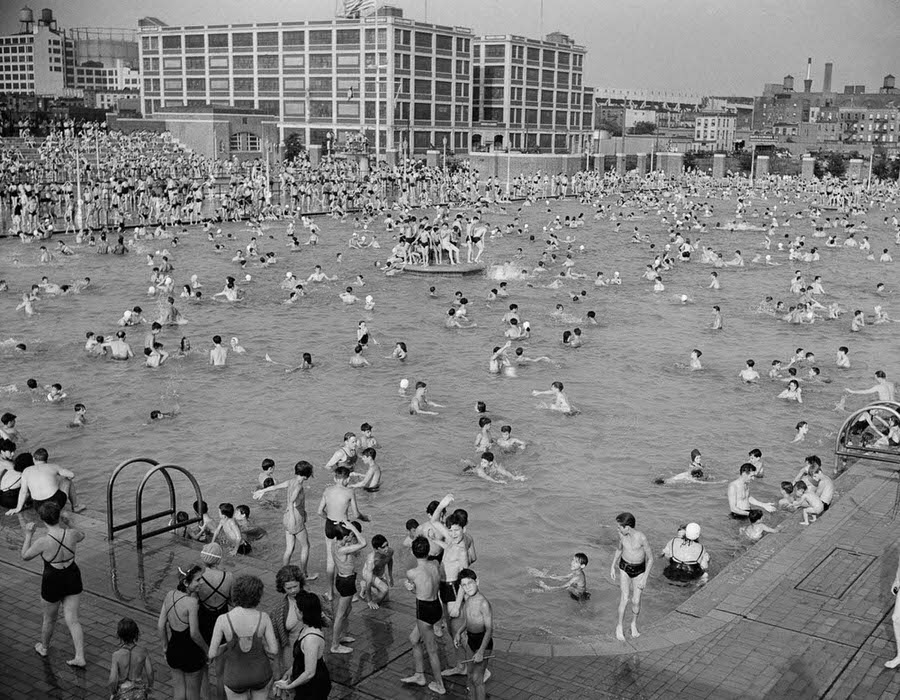
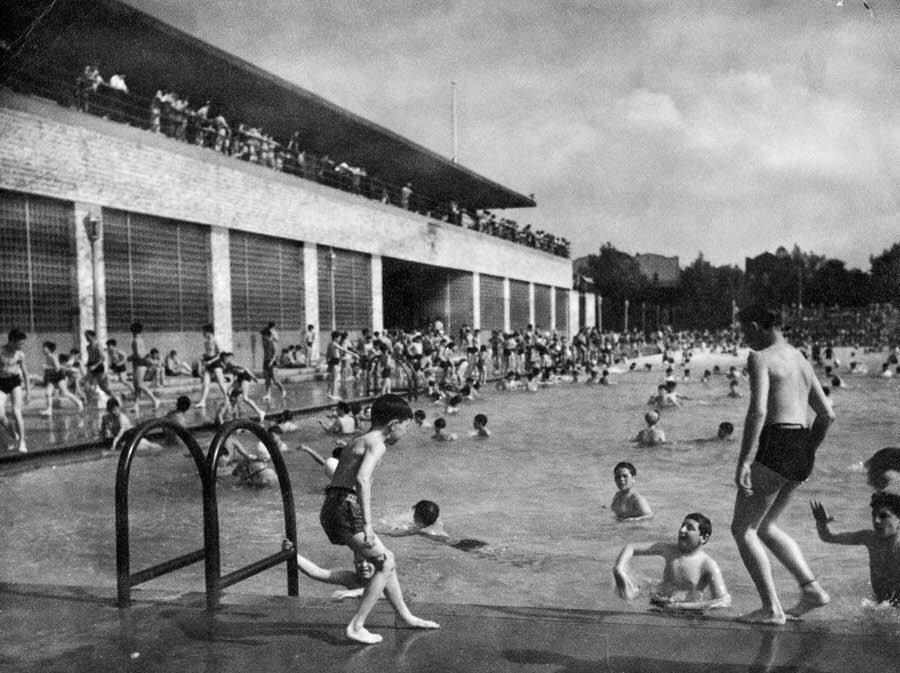
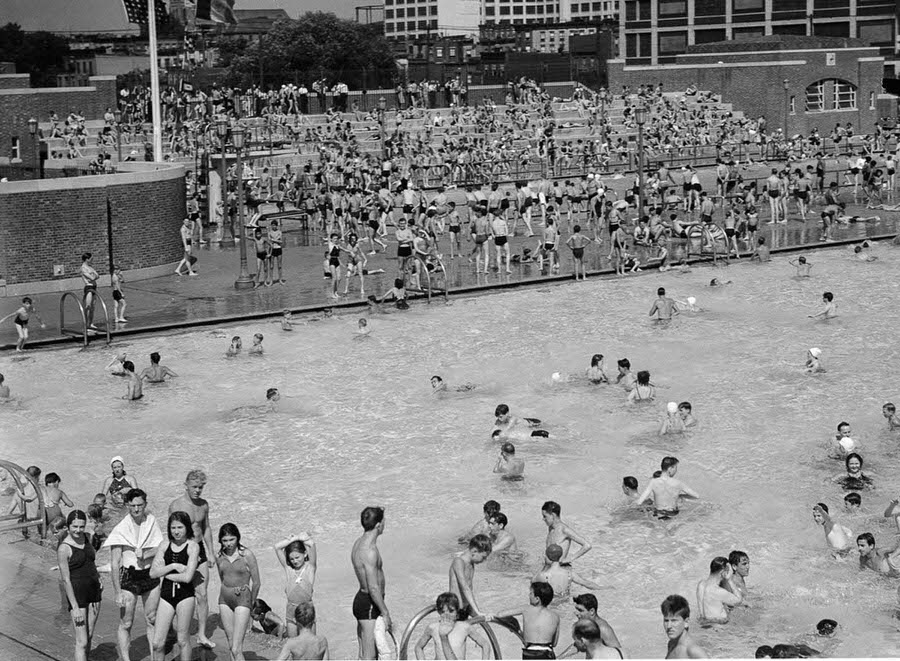
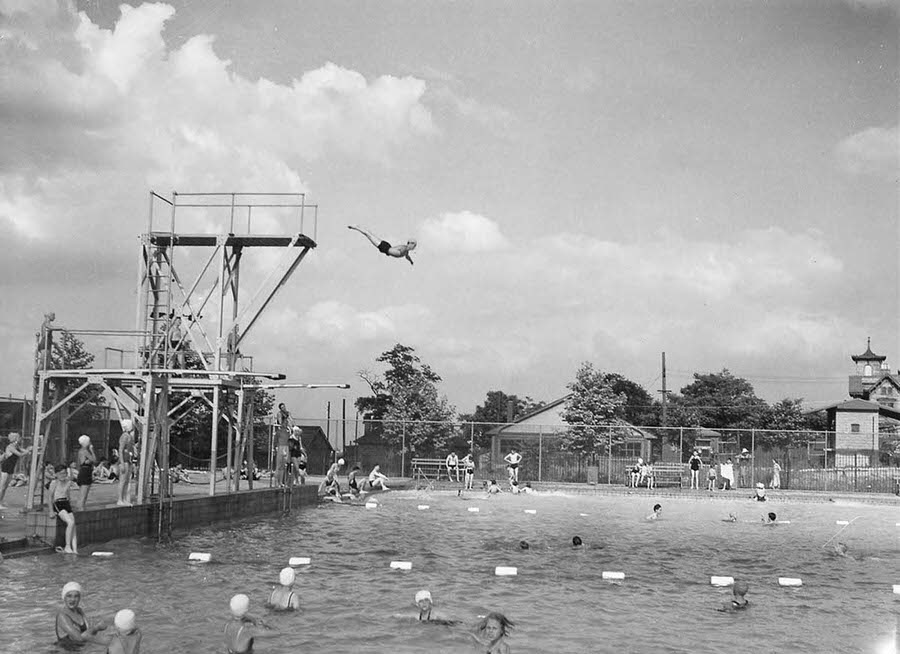
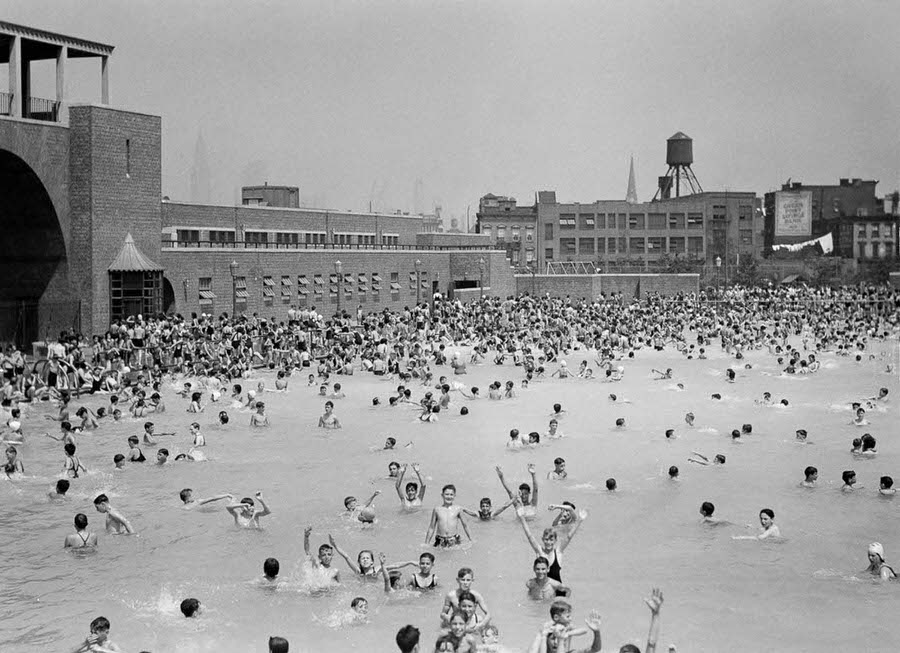
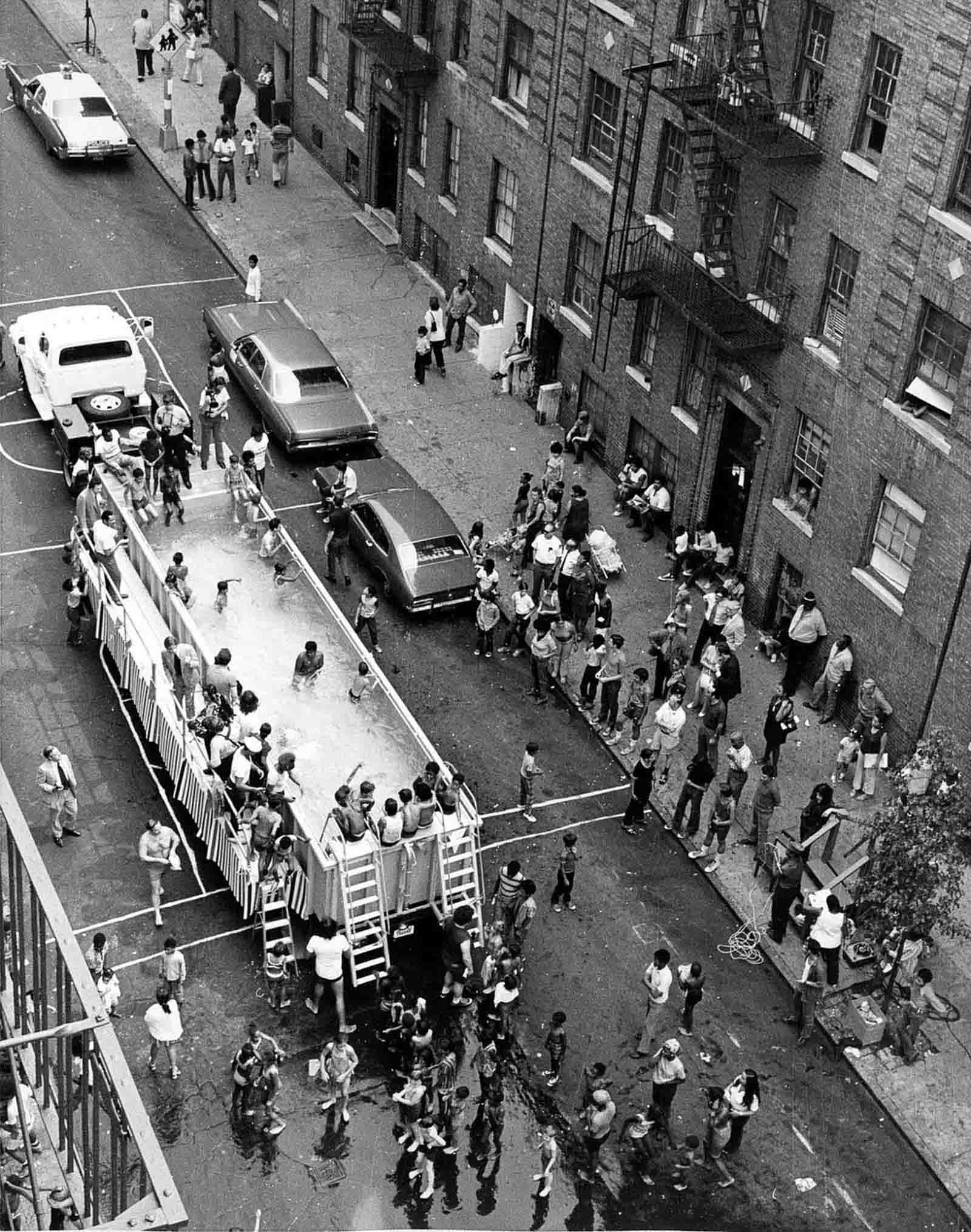
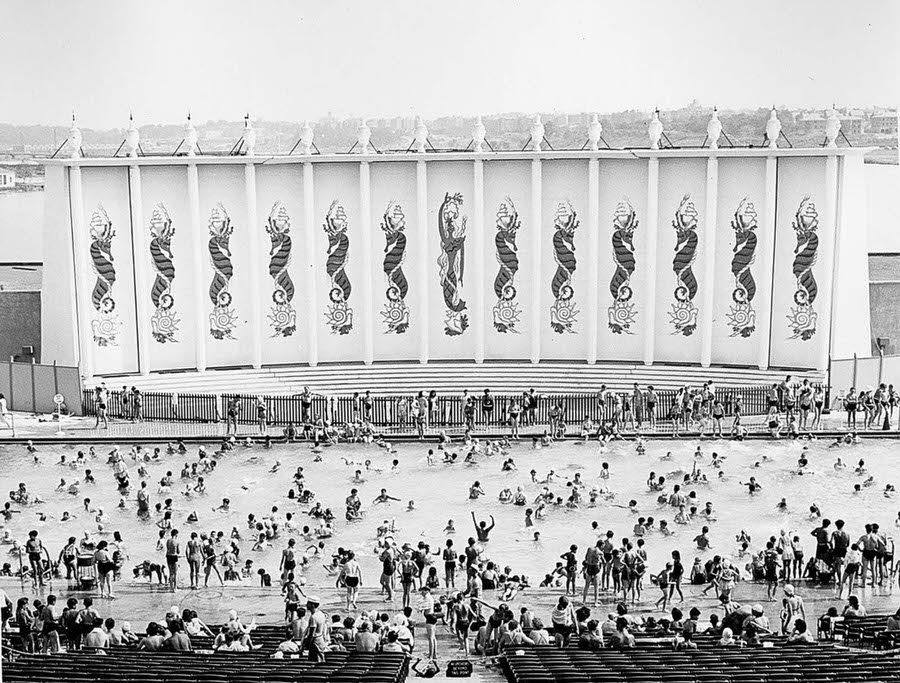
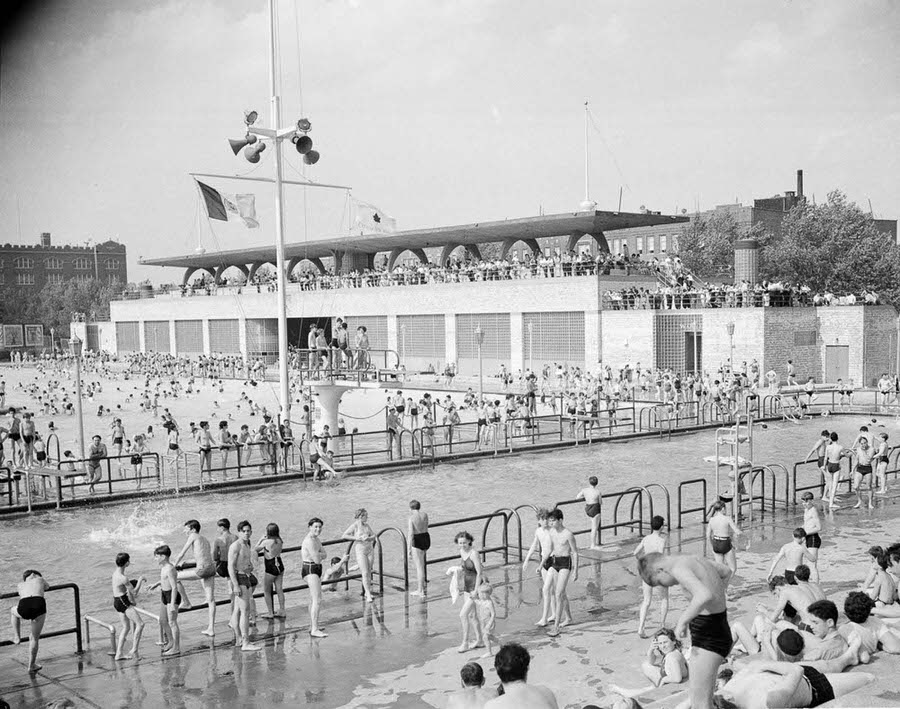
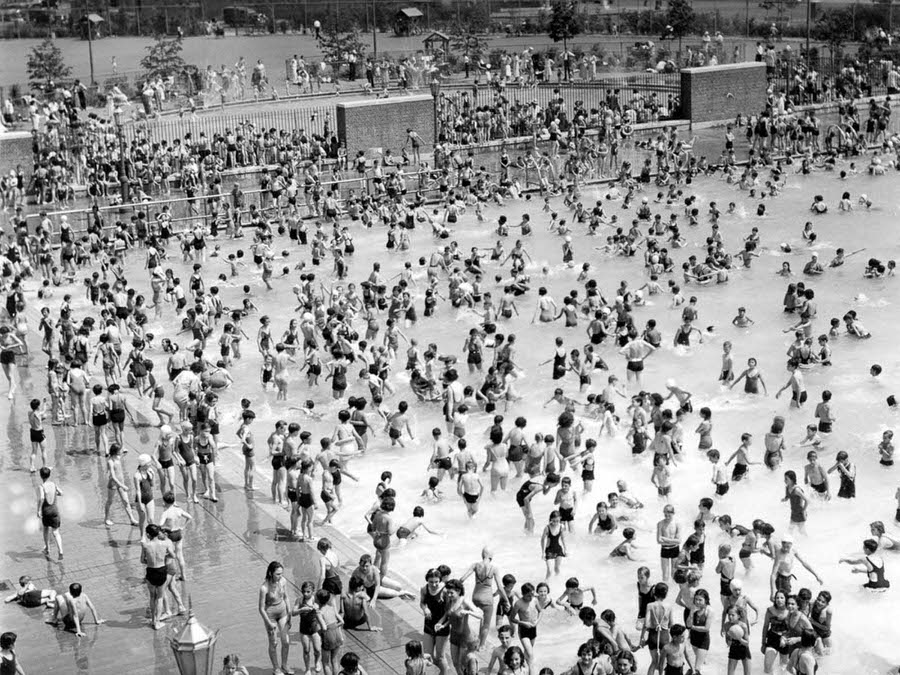
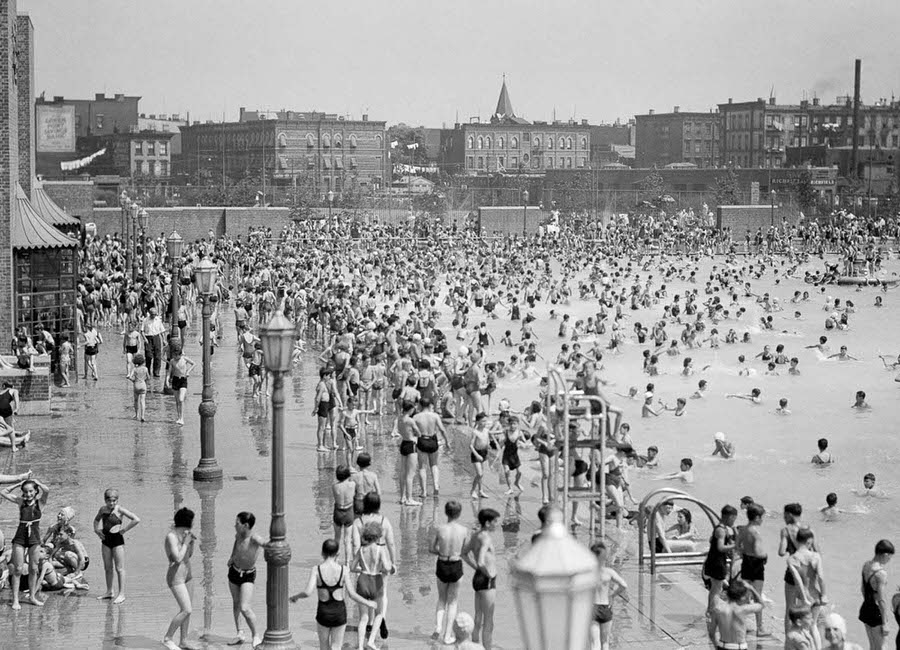
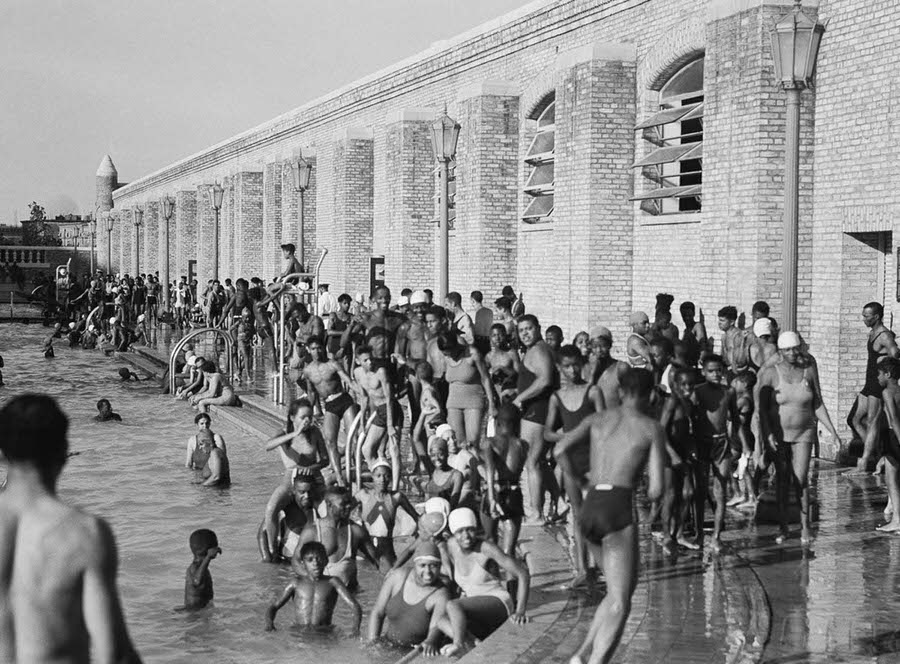
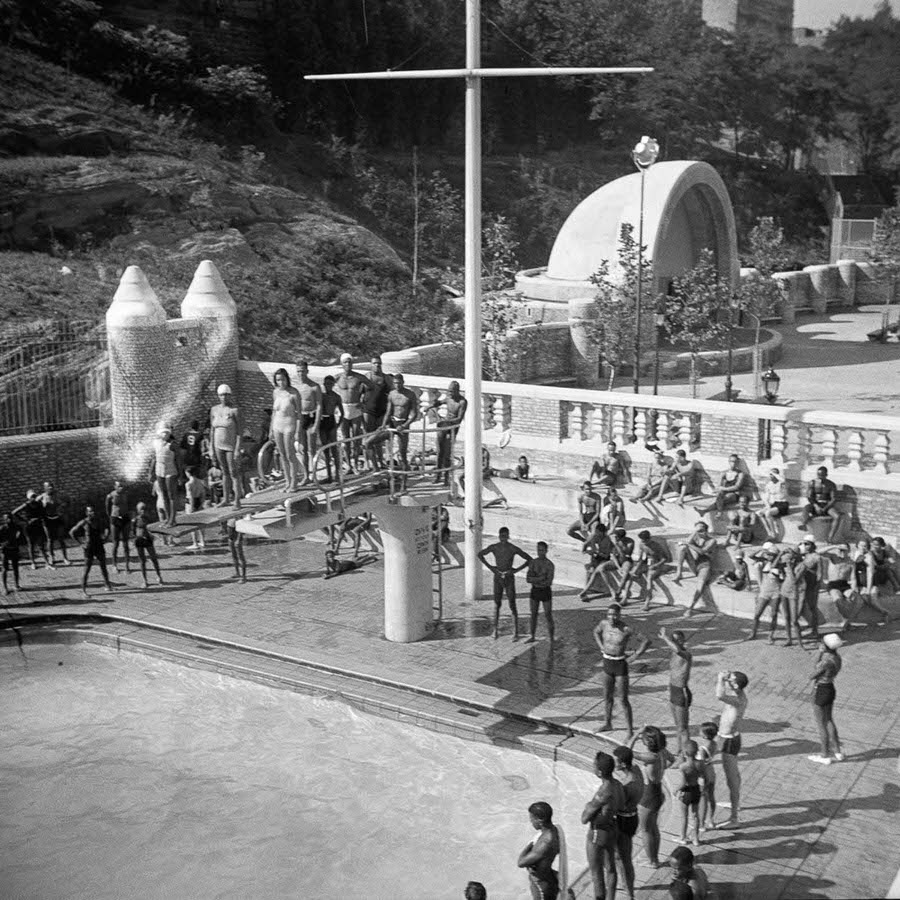
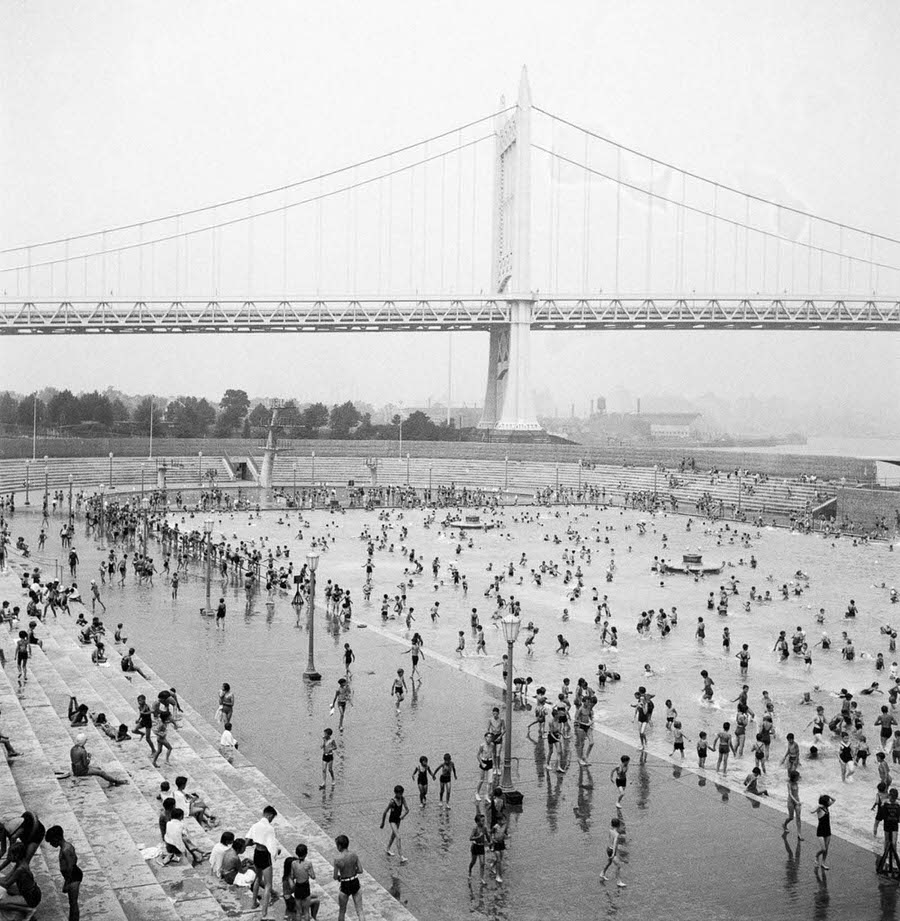
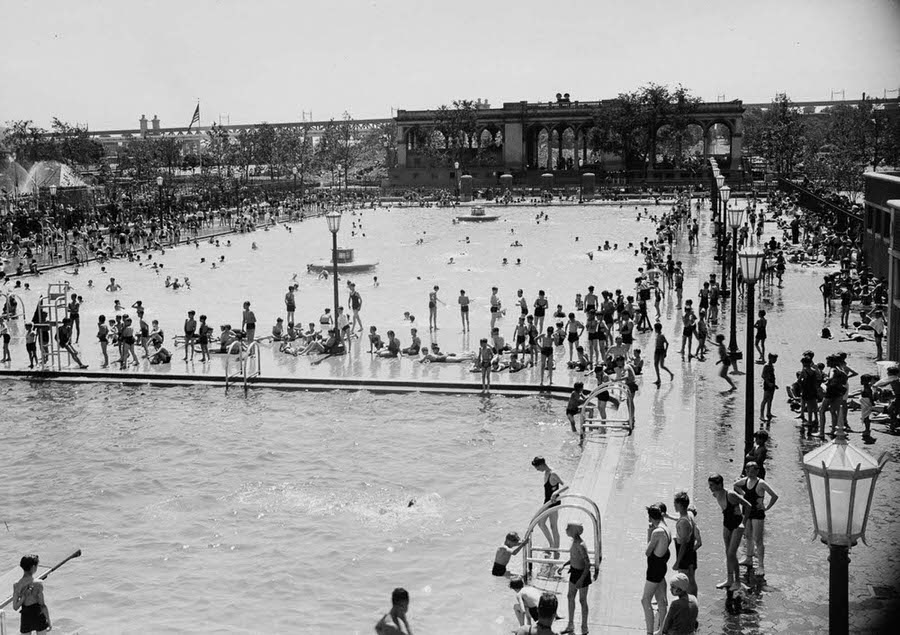
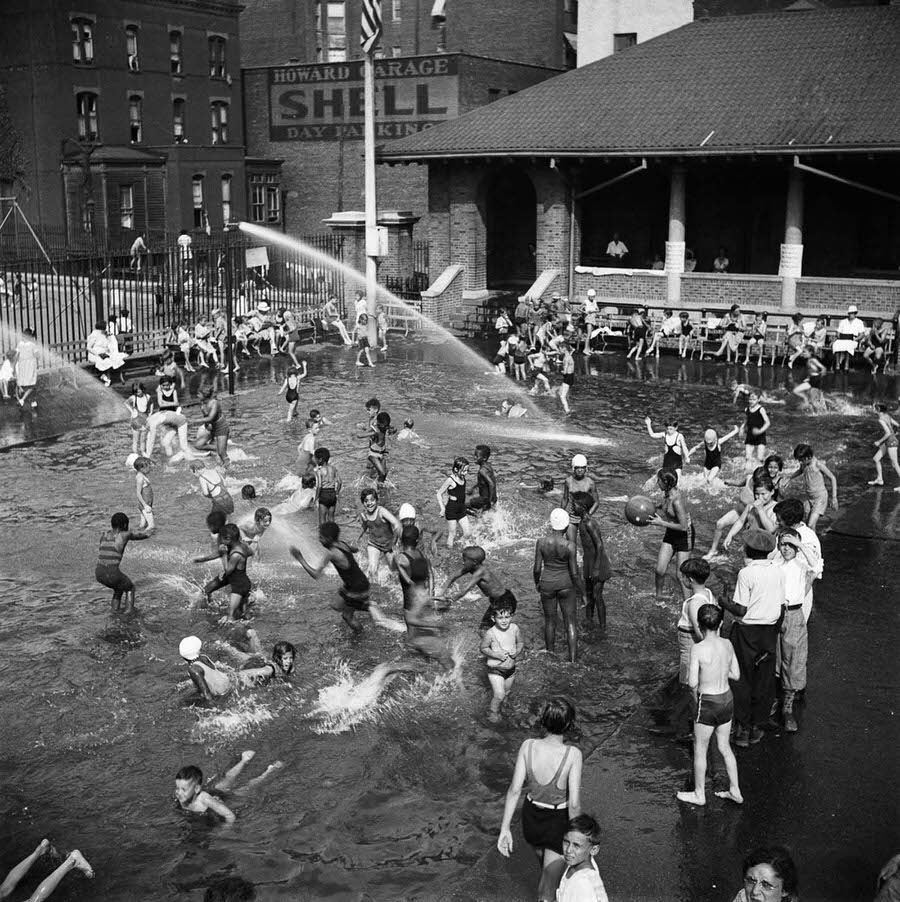
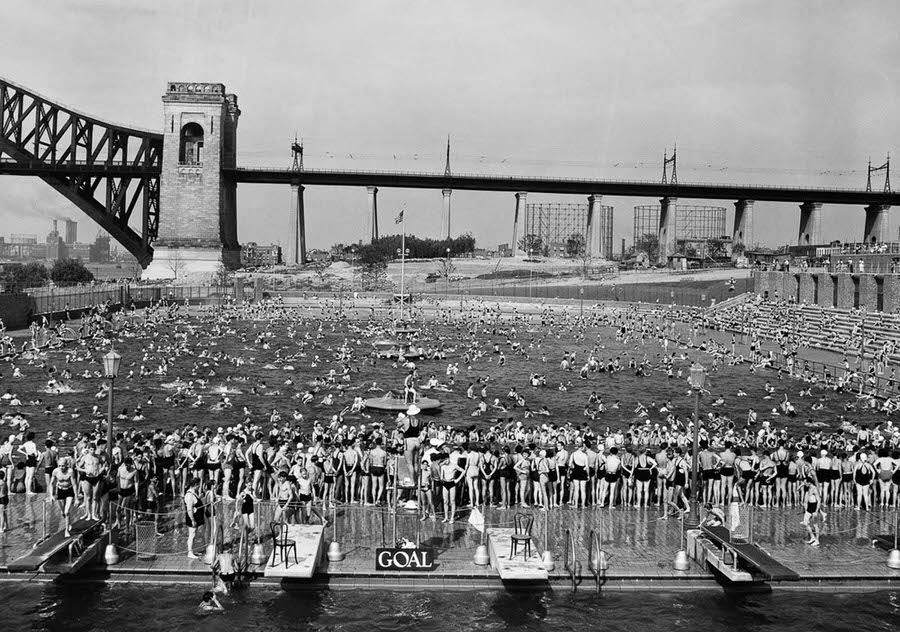
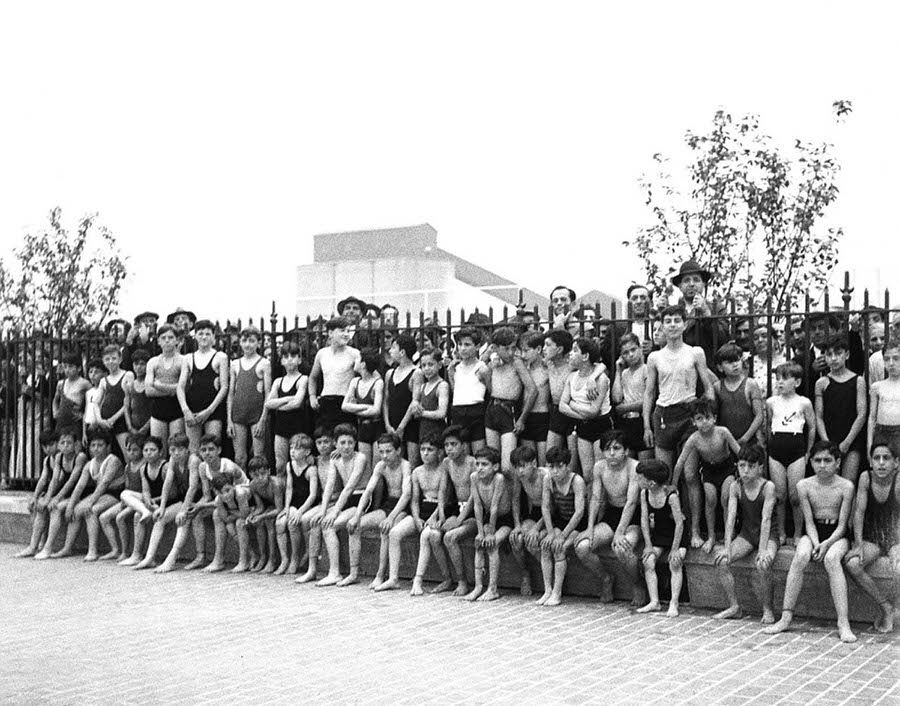
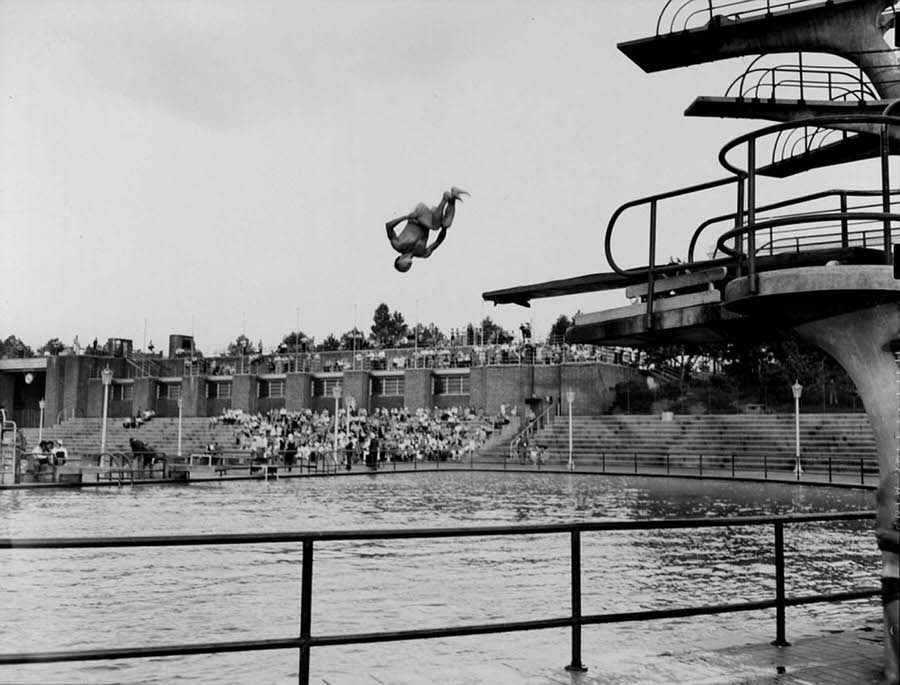
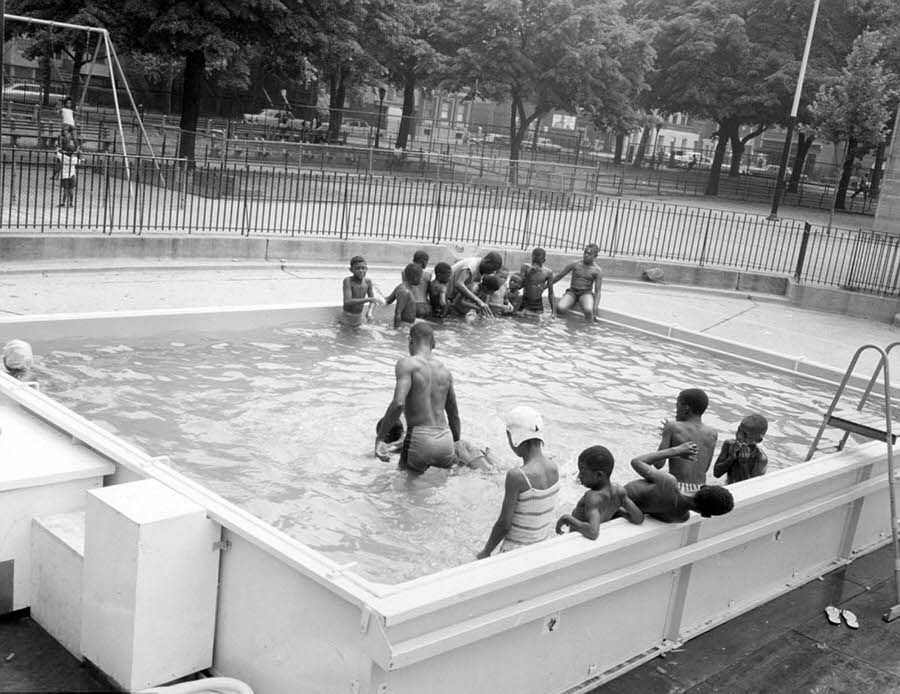
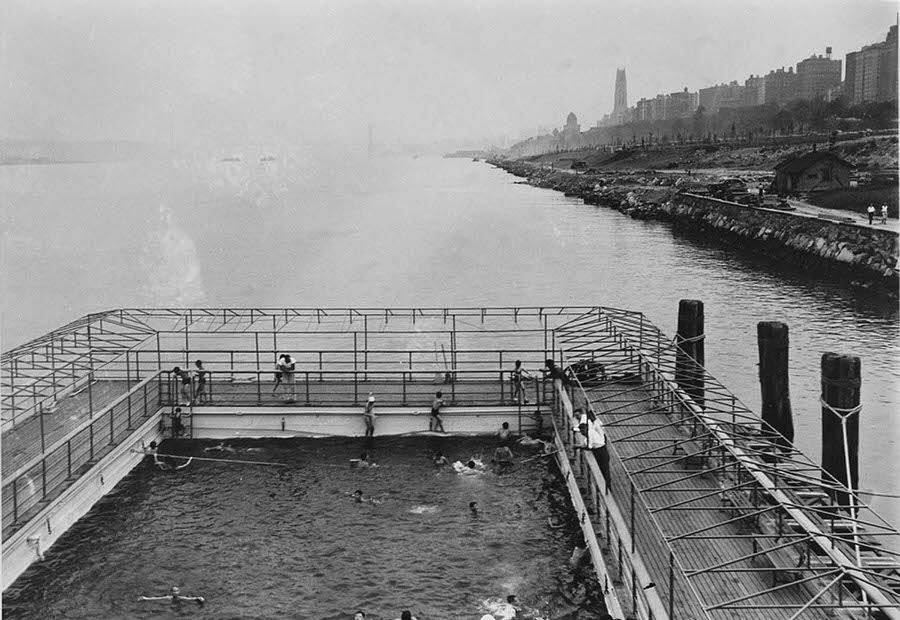
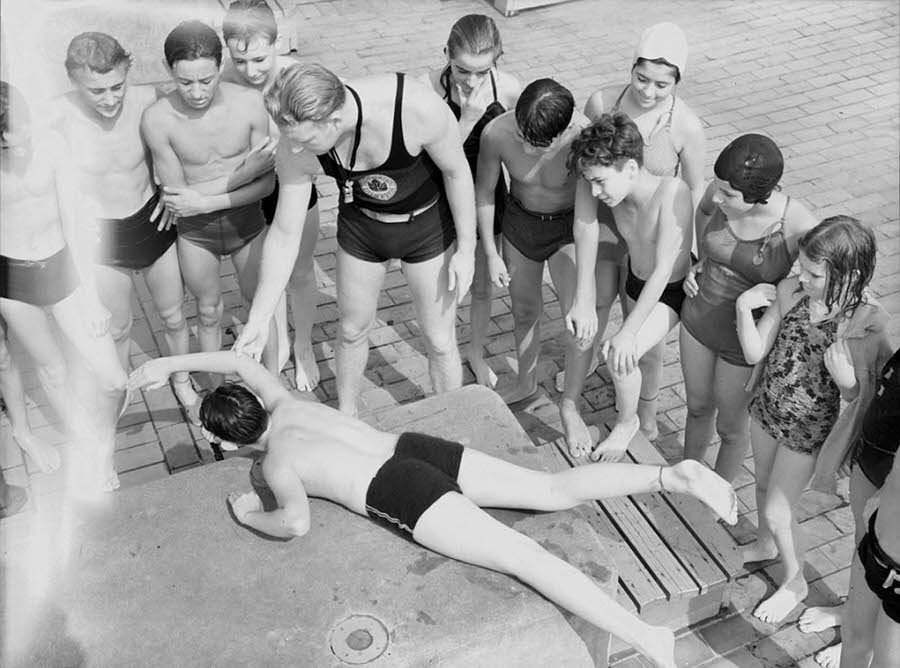
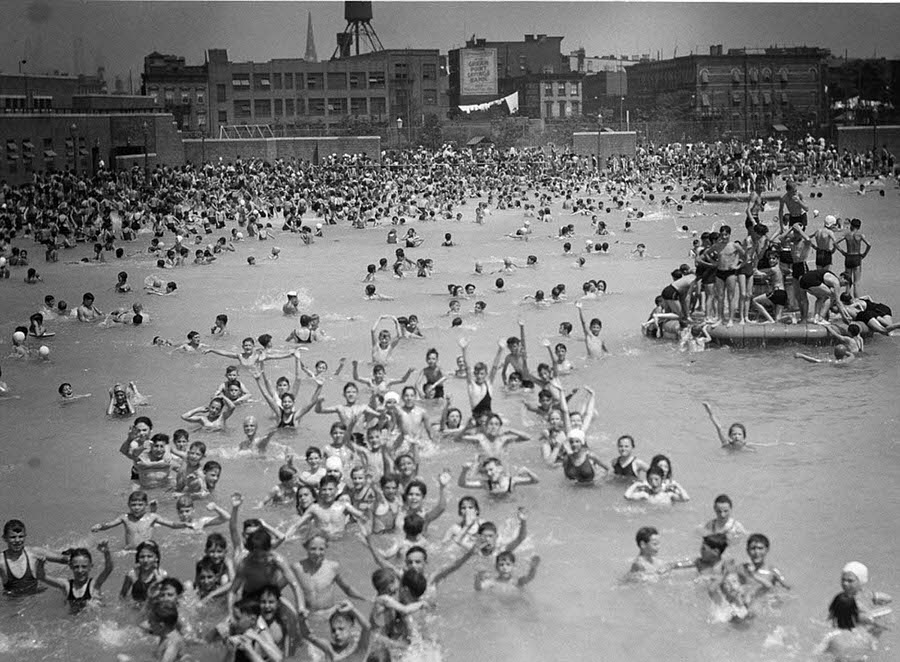
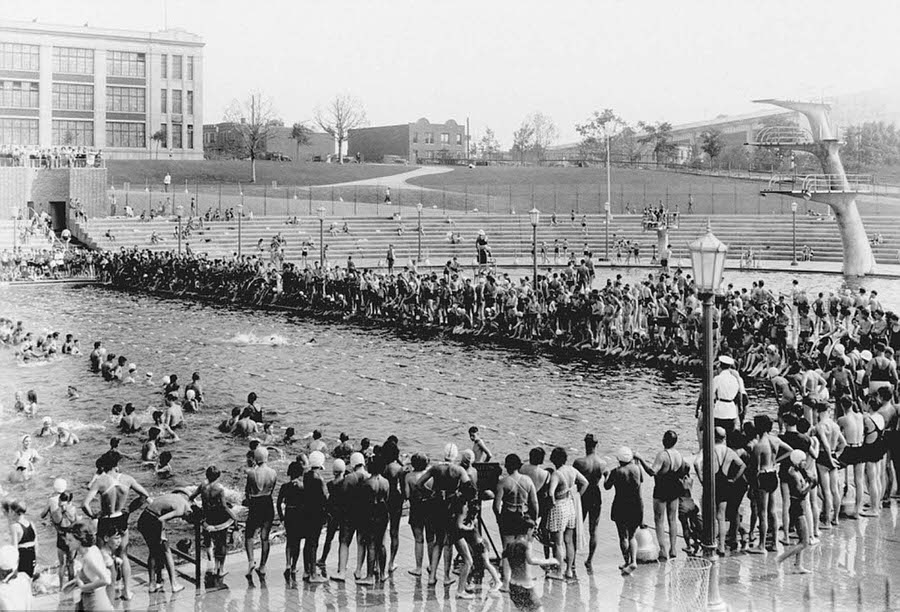
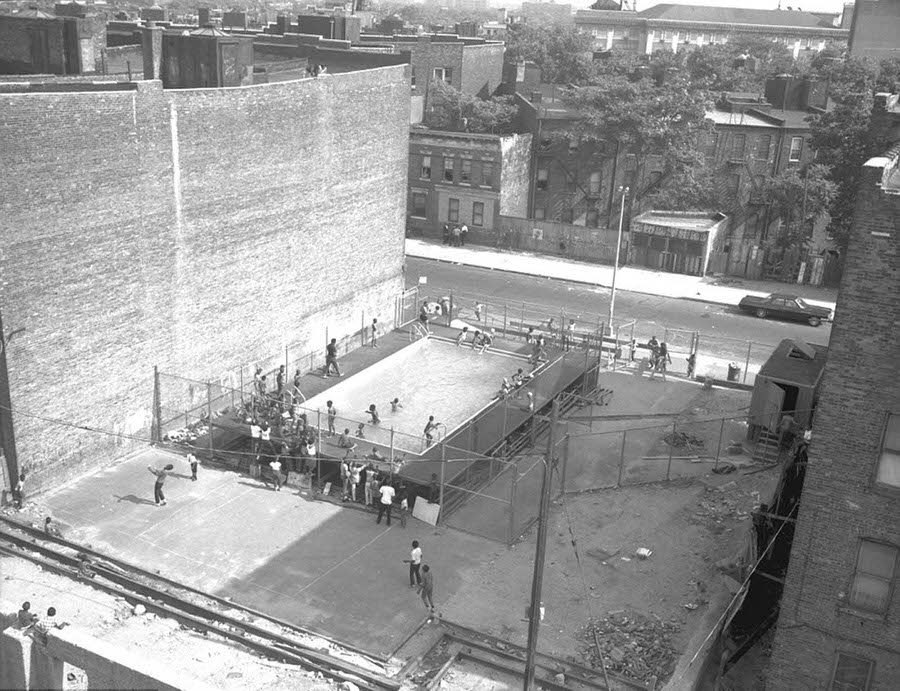

That’s awesome! Thanks for sharing!
Red Hook pool is still there too